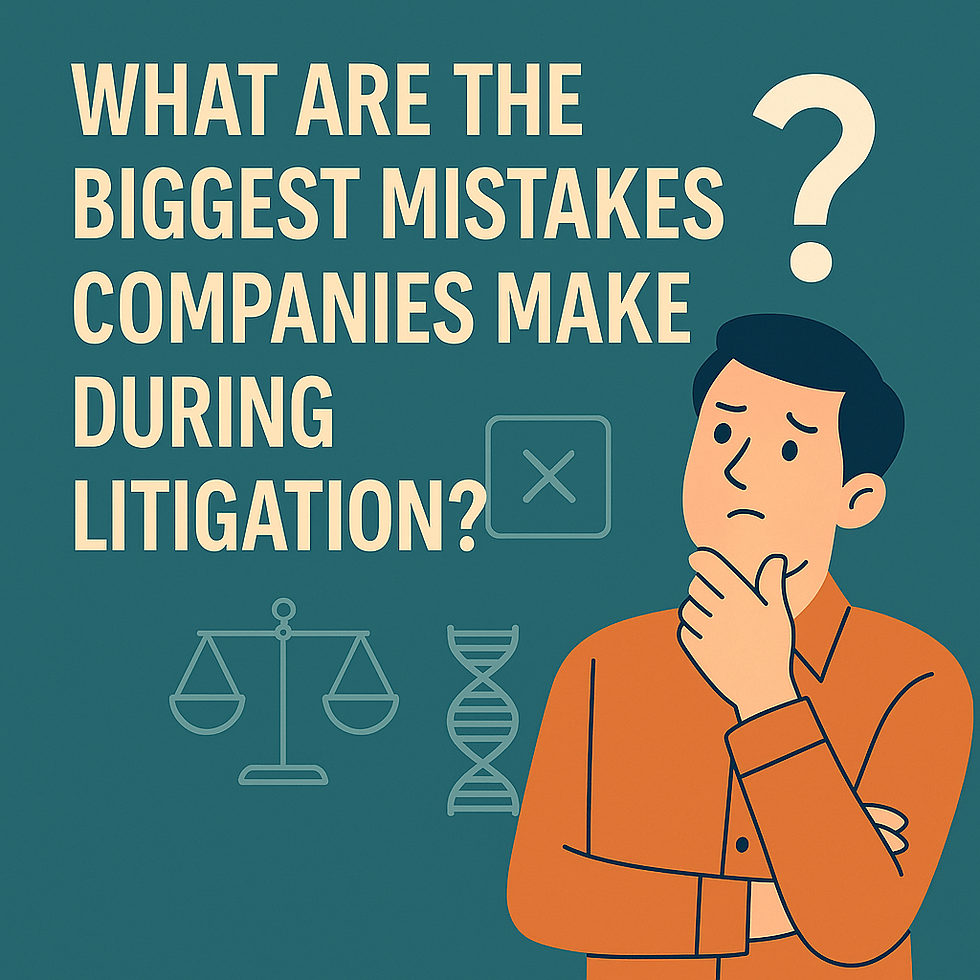When Business Partners Turn Adversaries: Preventing and Resolving Internal Conflicts
- Dennis Sapien-Pangindian
- Jul 31
- 3 min read

In the early stages of building a business, everything feels collaborative. Ideas flow freely, responsibilities are shared, and success feels like a team win. But as the company grows—and as money, equity, and power come into play—what started as a partnership can quickly devolve into conflict.
Disputes between co-founders, shareholders, or LLC members are among the most disruptive legal problems a business can face. They can stall growth, divide teams, destroy trust, and even lead to dissolution or litigation.
Here’s how to prevent those internal disputes—and what to do if it’s too late for prevention.
1. Get It in Writing Early
Too many entrepreneurs rely on verbal understandings or vague promises. You need clear documentation from the start:
Operating agreements or shareholder agreements
Bylaws or partnership agreements
Buy-sell provisions and exit plans
These documents should outline equity, voting rights, management responsibilities, dispute resolution processes, and what happens if someone wants out—or gets forced out.
2. Clarify Roles and Decision-Making Authority
Disputes often stem from misaligned expectations. Define:
Who’s the final decision-maker for finances?
Who manages day-to-day operations?
What requires unanimous consent versus a simple majority?
If you have multiple founders or managing members, regular board or management meetings—and written minutes—can help create accountability.
3. Establish Internal Dispute Resolution Processes
Build dispute resolution into your governance documents. Consider requiring:
Mediation before any partner sues the other
Internal votes or advisory board consultation before a major decision
Arbitration clauses to keep disputes out of public court
This can prevent disagreements from escalating to litigation prematurely.
4. Watch for Common Flashpoints
Some of the most common triggers of partnership disputes include:
Uneven contributions of time or money
Disagreements over business direction or spending
Perceived self-dealing or lack of transparency
One partner wanting to sell while the other does not
Flag issues early—don’t let silence turn into resentment.
5. If It’s Escalating, Take Action—Not Just Sides
If you see conflict forming:
Speak with legal counsel early
Review your governing documents and any prior communications
Don’t retaliate, freeze accounts, or make drastic changes without advice
Document everything, especially around finances and governance
Your goal is to protect the business, not just “win” the fight.
6. Consider a Business Divorce
Sometimes the best path forward is parting ways. Whether through a buyout, sale of shares, or restructuring of responsibilities, separating cleanly can preserve the company and avoid long-term harm. A structured exit agreement—built around valuation methods and non-disparagement clauses—can help both parties move on with minimal fallout.
7. As a Last Resort: Litigation
If internal processes, negotiation, or a business divorce don’t resolve the conflict, litigation may be necessary—especially when:
There are allegations of fraud, embezzlement, or fiduciary misconduct
One party is refusing to comply with the governing documents
Ownership or control of the business is in dispute
Litigation can be expensive, time-consuming, and public—but it may be the only way to protect the company or enforce rights. Work with counsel who can help you assess whether filing a lawsuit will truly serve the long-term health of the business.
Final Thought
When business partners become adversaries, it doesn’t have to mean the end of the road. With planning, structure, and clear thinking, most internal conflicts can be managed—or avoided entirely. The best founders build not just great businesses, but resilient relationships backed by smart agreements.
This blog is for informational purposes only and not legal advice. If you’re dealing with internal conflict in your company, speak with counsel experienced in partnership and shareholder disputes.




Comments